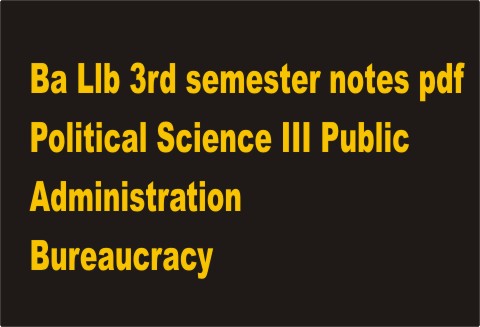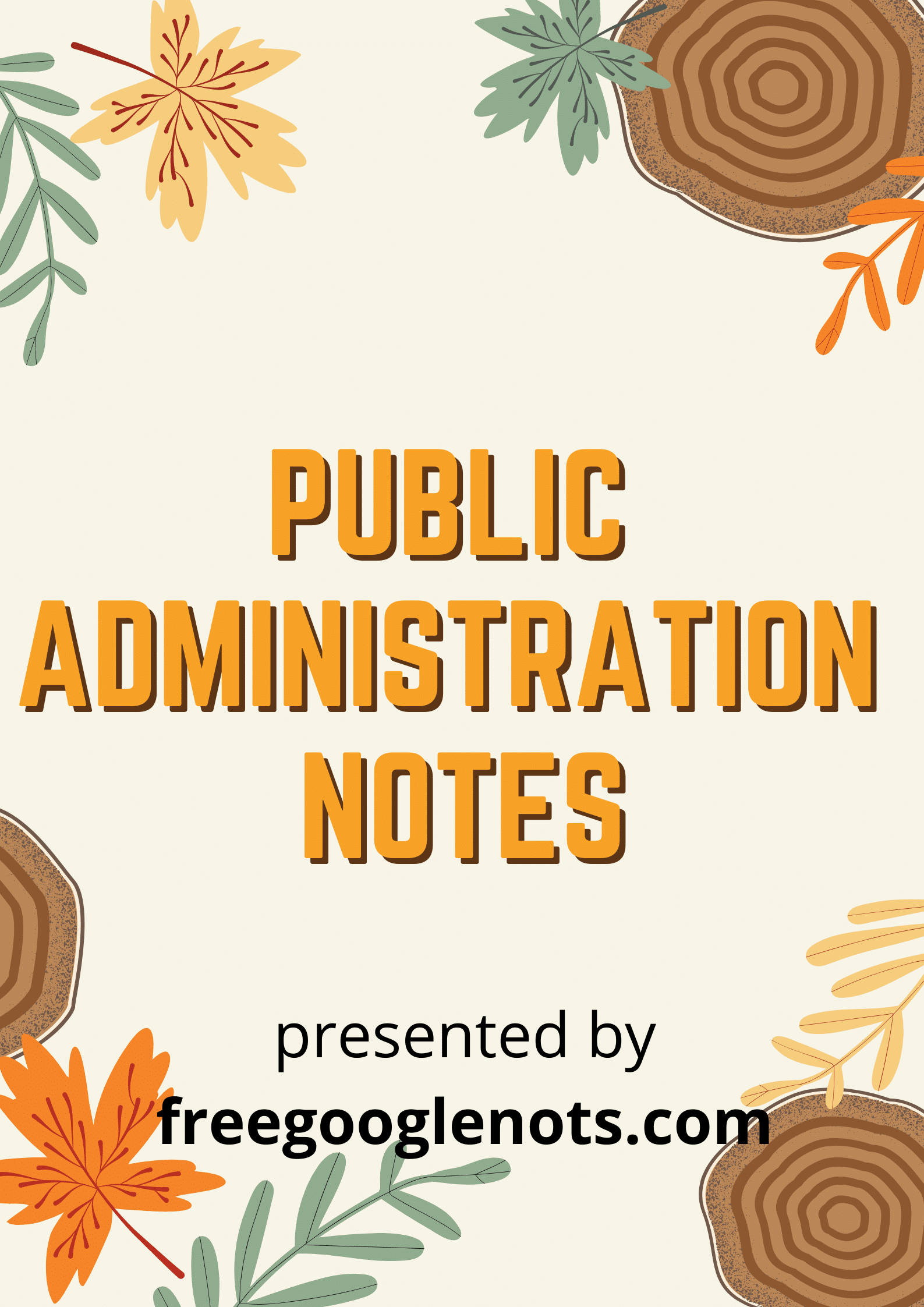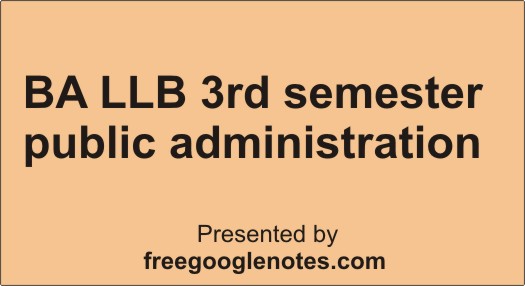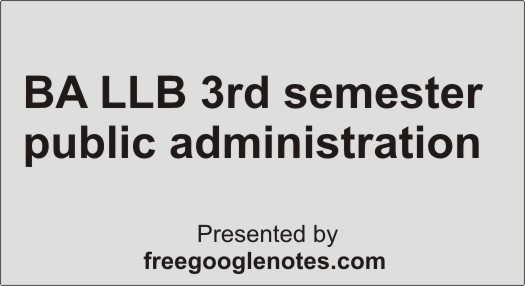Table of Contents
BA LLB causes cold war pdf
causes of cold war pdf
In the below post you will read ba llb causes of cold war pdf
for more please follow @blogger_priya
Q.3. Write short notes on Cold War.
Ans. Soon after World War ll, the world was engulfed by cold war-an era of neither peace nor war. The origin of the cold war can be traced back to the war period when the two major partners of western and Eastern blocs fought together against the common Axis danger, But their mutual relations were guided by mutual distrust and jealousy. This distrust assumed the shape of a rivalry after World War lI over the questions of Germany and Japan.
The Basis of the Cold War
The cold war was based on a number of assumptions. First, it assumed that the real threat to world peace was posed by the military strength of the Soviet Union. It may be noted that the Soviet Union’s military strength was virtually destroyed during World War II. This assumption gave rise. to the policy of strength which was responsible for the development of the military theory of cold war on the basis of the atom bomb, hydrogen bomb, and. clear warfare. Secondly, it assumed the inevitability of conflict between the socialist and capitalist States, which prompted the states of both the blocs to keep themselves in a condition of constant preparedness for a final showdown. It assümed that no co-operation was possible between states with the different social systems.) It was on accóunt of this feeling the Western powers equal all socialist movements which sub-versive movements. This example the American interventions from Greece and Turkey in 1947 to Vietnam. It assumed that the struggle between West and East was a struggle between freedom and tyranny.
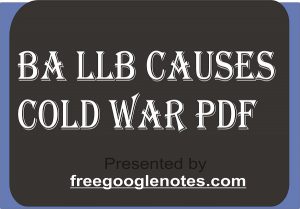
causes of Cold War
The main factors which contributed to the rise of cold war were as follows-
(1) In the first place, the Soviet Union tried to increase its influence in Eastern Europe in violation of the terms of the Yalta Agreement. Thus the Soviet Union éstablished Lublin Government in Poland in violation of her commitment that the exiled Polish government at London and the Soviet-influenced Lublin government would be duly represented in the future government of Poland. It also tried to liquidate the democratic parties and non-communist population of Poland.
(2) In the Balkans also the Soviet Union tried to establish a communist government despite an understanding with Britain regarding their spheres of influence in the Balkans. All this aroused the suspicion of the Western powers and they decided to check the further expansion of Soviet influence Secondly, the Soviet Union refused to withdraw its forces from Iran and instigated a rebellion in Northern Ireland. The Soviet Union also compelled Iran to sign a treaty on 4 April 1946 which recognized Soviet interest over oil resources of North Ireland for 25 years. This was in complete contrast to the policy adopted by Britain and the USA which withdraw their forces from Iran as per terms of the agreement of 1942. The question of the presence of Soviet forces in Iran was raised in the UN and ultimately the Soviet Union was made to withdraw its forces from Iran. This policy of’ Soviet Union greatly contributed to the sharpening of tension with Western powers.
(3) Thirdly, Russia extended support to the Communists to pull down the legally constituted government in Greece. which soon engulfed the country in a civil war. This was greatly resented by Britain and the USA and they extended every possible assistance to save the democratic government of Greece.
(4) Fourthly, Soviet Union brought undue pressure on Turkey to modify the Straits Convention and demanded certain territories. As turkey refused to oblige, the Soviet Union began to foment trouble in Turkey. Thereupon USA came to the rescue of Turkey the growing communist threat in Greece and Turkey led to the enunciation of the Truman doctrine by the USA which pledged support to people who were resisting attempted subjugation by armed minorities or by outside pressures.
(5) Fifthly, the attitude adopted by the Soviet Union towards Germany also greatly contributed to the cold war. The Soviet Union, unmindful of its commitments in the Potsdam Agreement and London Protocol, tried to put unnecessary burden and pressure on the German region under Occupation. it also deprived the people of Germany under the Soviet Zone of their fundamental political freedom. All this was greatly resented by America and other Western powers.
(6) Sixthly, the refusal of the United States and other Western powers to accord recognition to the governments of Bulgaria and Romania also generated tension between the two blocs. The plea of the Western powers. that they had refused to extend recognition to these countries on the ground that they lacked popular representation, could not satisfy the Russians
(7) Seventhly, frequent use of veto powers by the Soviet Union during The initial years of the working of the United Nations. was also responsible for generating tension between the Soviet Union and America. It allowing all their plans. On the other hand, the Soviet Union complained that since the United States had manipulated the majority in the Security Council, it hảd no other choice but to make Frequent use of its veto power. This sense of distrust towards each other greatly contributed to the cold war.
(8) Eighthly, the unnecessary obstacles put by the Soviet Union in the way of the conclusion of peace tactics also raised a good deal of suspicion in the minds of the American people about the ultimate intentions of the Soviet Union.
(9) Ninthly, bitter criticism of the capitalist system and vociferous propaganda against the United States also contributed to the tension between the two countries. The Soviet Union stepped up its activities in the United States and even tried to smuggle out some of the confidential and secret documents. This compelled the United States to adopt a stiff attitude towards the Soviet Union.
(10) Tenthły, the unnecessary delay by the Western powers in opening the second front during the Second World War, and the consequential losses suffered by the Soviet Union made her suspicious about the true designs of the Western powers. The inadequate aid was given by the western powers of the Soviet Union during the war also raised doubts in the minds of Russian leaders about the true intentions of their Western allies. This suspicion was further heightened due to the attempt on the part of America and England to keep their program of atom bomb secret from the Soviet Union and other East European countries.
(11) Finally, the abrupt suspension of the. land-lease aid by the United States to the Soviet Union, soon after the surrender of Germany, convinced the Soviet leaders that’ the Western powers were jealous of their progress.
All the above factors contributed to the growth of cold war.
Phases of Cold War- The cold wars passed through a number of phases. The first phase lasted from 1946 to 1949. During this period it was held that if strong pressure could be organized, the ked regime
in the Soviet Union would collapse like a house of cards. This feeling arose because America was having a monopoly on the Atom Bomb and Russia was in very weak condition. Therefore, it was held that the U.S.A. due to her superiority in the military could determine the history of the world and influence the internal affairs of the Soviet Union. The policy of containing the Soviet Union could not be implemented because the Alice of America was not yet fully armed for such a war and the memories of the Second World War were still fresh in their mind, which prevented them from resorting to war.
During this phase, America resorted to direct military intervention through the Truman Doctrine of March 1947 and economic integration of the West European Powers by the Marshall Plan of June 1947. The U.S.A. during this period followed the policy of intervention and defender the status quo. This phase was also marked by anti-communist feeling, which the U.S.A. tried to implant throughout the world. This phase of the cold war ended with the conclusion of the North Atlantic Treaty on April 4, 1949. This treaty was a sort of new Anti-Comintern Pact and was openly directed against the Soviet Union. These activities of the U.S.A. naturally provoked the Soviet Union to take necessary measures for self-defense.
The second phase lasted from 1949 to 1953. During this period the U.S.A. continued her policy of military and economic assistance against the Soviet Union. During this period the U.S.A. concluded a security treaty with Australia and New Zealand (ANZUS) and a Peace Treaty with Japan (1951). This period also witnessed the Korean War which was a major confrontation between the U.S.A. and U.S.S.R. The United States intensified its anti-communist propaganda and spent millions of dollars for the purpose. She also invested huge amounts to carry out subversive activities in the socialist countries. This provoked a natural reaction from the Soviet Union which exploded the atom bomb and broke-down the American monopoly.
The Third phase of world war listed from 1953 to 1957. During this phasé, U.S.A. continued her policy of military and economic offensive. She organized the South East Asia Treaty Organization (S E AT O) and the Middle East Defense Organization (M.E.D.O.). These two treaties became new defense made a serious effort to perpetuate American domination in the Middle East by extending the Truman Doctrine to this area U.S.A. also established a number of military bases around Soviet territory and concluded defense treaties with 43 states. It was also during this period that the U.S.A. involved herself in Vietnam, which turned out to be a grim climax of the Cold war.
During this phase, the Soviet Union also increased its influence. She Sponsored WARSAW Treaty with East European powers as a Counter-measure 1o N.A.T.O. She concluded defense treaties with 12 states and foiled the American attempt to promote counter-revolution in Hungary. This period also witnessed the permanency of the Potsdam partition of Germany. The subsequent establishment of. two German States allied to the two bloc vas also The outcome of the cold war during this period.
The phase also saw the simultaneous explosion. hydrogen bombs by the U.S.A. and the Soviet Union. During this period a dialogue between the two countries was opened which forecast that the next phase of international relations would be marked by a spirit of negotiation and not mutual threats of extermination.
The fourth phase lasted from 1957 to 1962. It saw two. extreme trends. On the one hand, the principles of peaceful co-existence were asserted and on the other hand, it saw the most dangerous tence prevailed. The two countries exchanged culturał and political delegates. The heads of governments of the two countries paid visits to each other. The agreement at tor Paris Summit clearly demonstrated that the cold War attitude had ended. But this spirit was sabotaged by the U-2 incident.
The damage done by the U-2 incident was partly repaired by the General Assembly Summit of 1960 and. the Vietnam meeting of Khrushedev and President Kennedy in 1961. But the Cuban crisis literally brought the two countries to the verge of war. However, the situation was finally saved by an agreement. between Khrushedev and Kennedy by which the Soviet Union agreed to withdraw the missile base in exchange for the American guarantee never to invade Cuba.
The filth phase started in 1962 and is marked by a deep appreciation of the futility of nuclear war strategy. This phase saw the conclusion of the “Partial Test Ban Treaty” of 1963. By the Geneva Hot-Line Agreement of 1963, the two countries were closely linked. The Non-Proliferation Treaty of 1968 could also be concluded due to the understanding of the two powers. However, even during this period, the problems of Germany and Vietnam stood in the way of full co-operation between the two countries.
A process of detente betwečn the two major powers started in 1959 when Khrushedev advocated the policy of peaceful co-existence. in pursuance of this policy, he visited Washington and met President Eisenhower. On this occasion, he also addressed the General Assembly of the United Nations and proposed that within four years all the States should completely disarm themselves.
Another important step in the direction of casing the cold war was the three Power Partial Nuclear Test Ban Treaty formally signed on 5 August 1963. This treaty provided for a limited ban on all nuclear tests in the atmosphere including territorial waters or high seas. On the recommendations of the General Assembly United States. The Soviet Union. and Great Britain adopted the Nuclear Non-Proliferation Treaty. Under this treaty, the nuclear powers agreed not to transfer their nuclear Weapons or control over them to any non-nuclear power or provide assistance in producing those weapons.
The cold war assumed a new dimension in the wake of the Sion-Soviet rift in early sixties. This cold war between the Soviet Union and China brought about a thaw in the traditional cold war between the Soviet Union and United States. In the wake of the American bombing of North Vietnam, the Arab-Israel conflict of 1967, and the Soviet military intervention in Czechoslovakia. in 1968, the cold war assumed more serious shape. During the Berlin crisis of 1969, there was. a possibility of direct confrontation between the two super-powers. However, by 1970 the tension somewhat subsided and the two superpowers agreed not to use force against each other. The Soviet Union concluded a treaty with West Germany under which it agreed to have diplomatic relations with West Germany and not to use 1orce against t. This helped in reducing tension in Europe. In August 1971 as a result of the agreement over Berlin between the U.S.A., Britain, the USSR, and France the tension further subsided. The agreements between North Korea and South Korea and East Germany which were signed on 4 July 1972 and 8 November 1972 respectively also contributed to the reduction of tension between the two super-powers.
In the field of arms limitations also significant progress was made. In 1973 Brczhney, the Chief of the Communist Party of USSR paid a return visit to Washington, and Summit talks were held. In these talks, two parties agreed to work for lasting world peace and to end the nuclear arms race. This summit talk resulted in the conclusion of four agreements between the two countries. These agreements related to co-operation in the field of research in agriculture, transportation, and expansion of cultural and scientific exchanges between the two countries. The two countries also committed themselves to negotiate a treaty for mutual reduction of nuclear weapons and co-operation in nuclear power research. The two countries also undertook to avoid nuclear war not only between then but also with the third state. The leaders of the two countries asserted that lasting peace in Europe
was the paramount goal of their policy and pledged to work for the success of the Conference on European Security scheduled to be held at Helsinki in July 1973.
The Changé in leadership in the USA, following President Nixon’s resignation in the wake of the Watergate scandal, did not mark any change. The new American President Ford continued efforts for the reduction of nuclear weapons and concluded an agreement with Brczhancv for limiting strategic offensive weapons for the next ten years. The two leaders also attended the Summit Conference on Security and Cooperation in Europe held at Helsinki in July 1975 and an atmosphere of complete detente between the two supers powers prevailed. In July 1975 the two superpowers participated in the joint Apollo-Soyuz space mission, which was an important indication of the cordial relations.
But despite the detente, there were many points of conflict between the two powers, and they tried to check each other’s influence. For Example, America favored the military. the build-up in Iran with a view to maintain their influence in the Middle East and to check the growing influence of the Soviet Union. the establishment of Diego Garcia military base was aimed at counter-checking the Soviet presence in the Indian ocean area. The Soviet Scheme of Asian Collective Security was also aimed at replacing the American influence in South-East Asia as well as to contain China. In Bangla Desh also the two powers supported the opposite parties. While the Soviet Union supported the cause of the people of East Bengal and rendered every possible help to India to deal with the Refuge problem, the United States extended full support to Pakistan. in the war between Egypt and Israel in 1973 once again they supported the rival parties-Soviet Union sided with Egypt while the USA backed Israel.
As the duration of the treaty in the limitation of strategic offensive arms concluded between USA and USSR in 1972, drew closer, they commenced negotiations for a fresh agreement and concluded SALT-II in June 1975 under which both. the superpowers agreed to limit the expansion of clear weapons. They also pledged to work for the reduction of strategic arms in order to achieve the goal of complete disarmament. However, subsequently, the US Senate refused to ratify the treaty and it could not come into force.
The cold war which somewhat subsided during the early seventies got once again reactivated following. Soviet intervention in Afghanistan in 1979: The western, powers were so bitter about it that they decided to boycott the Olympic Games held in Moscow in July 1980. In the
In subsequent years also the two superpowers adopted critical altitude towards their opponents. This new phase of the cold war was described as a ‘new cold war’ or ‘second cold war’. it differed from the earlier cold war in many respects. Firstly, unlike the earlier cold war, this war was mainly confined to two superpowers. Secondly, in the new cold war the two superpowers were involved in the nuclear armament race and as such was more threatening. Thirdly, the clement of ideology which was a dominant feature of the earlier cold war, was conspicuously absent this time.
Impact of the Cold War
1. The cold war gave rise to permanent types of alliances which were concluded much in advance in war. N.A.T.O., S.E.A.T.O., C.E.N.T.0. and the Warsaw Pact were all formed in the wake of the cold war this alignment system covered most countries of the world. Thus cold war led to an alignment system even during the peace times and constant efforts were made to strengthen these alliances. However, the newly independent states of Asia and Africa tried to avoid alignment with either of the two groups.
2. Cold war stood in the way of achieving the objective of one world. The mutual rivalry reduced the U.N.O. to the status of a simple forum of world opinion. The cołd war prevented some of the states from becoming members of the world body. The denial of representation to the people’s China in the Security Council for a long time was mainly due to this Cold war.
3. Cold war resulted in the nade race for armaments. States of both the blocs spent huge amounts to equip themselves with the latest weapons. This not only led to the diversion of money which could have more profitably been utilized for improving a lot of the people. It also led to both the camps arming themselves to the teeth. Under the circumstances even local quarrels or misunderstandings could lead to a nuclear war.
4. Cold war adverseły affected the economic development of the country by diverting human labor and resources to the manufacture of destructive weapons.
5. The cold war and the consequent competition among Great Powers resulted in more freedom of action for the small and middle powers. Each group tried to win ‘them over. The influence which the afro-Asian countries were able to exert in the U.N. cold war.





